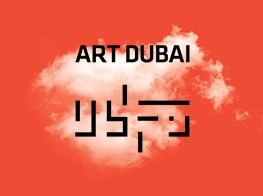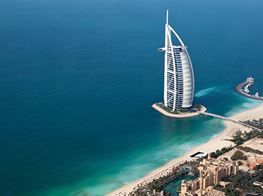Kate Fowle

Kate Fowle is chief curator at the Garage Museum of Contemporary Art in Moscow and director-at-large at the Independent Curators International (ICI) in New York. Previously she was executive director of ICI (2009-13), the inaugural international curator at the Ullens Center for Contemporary Art in Beijing (2007-08) and chair of the Master’s Program in Curatorial Practice, which she co-founded in 2002 for California College of the Arts in San Francisco. Before moving to the United States Fowle was co-director of smith + fowle in London and curator at the Towner Art Gallery and Museum in Eastbourne, East Sussex (1994-96).
Fowle is the guest contemporary galleries curator for the ninth edition of Art Dubai. The fair takes place March 18-21, 2015 and presents a select yet diverse line-up of around 90 galleries from the UAE and around the world, across three programmes: 'Contemporary'; 'Modern', devoted to masters from the Middle East, Africa and South Asia; and 'Marker', a curated section of art spaces that focuses each year on a particular theme or geography.
Art Dubai hosts an extensive not-for-profit programme which includes a dynamic roster of commissioned projects, film and radio programmes; artists’ and curators’ residencies; educational initiatives for children through to professionals, including the year-round art school Campus Art Dubai; an annual exhibition of works by winners of The Abraaj Group Art Prize; and the Global Art Forum. Over the last eight years, Art Dubai along with the Sharjah Art Biennale which also opens in March, have become cornerstones of the region’s contemporary art community.
Can you tell me a little bit about your earlier projects, such as smith + fowle, and how these inform your curatorial approach now?
Originally I am from the UK, where I started working as a curator in a regional museum in the early 1990s, having initially trained as an artist. smith + fowle was a curatorial office that I established with Deborah Smith in 1996. Looking back, it was one of the earliest female independent partnerships of its kind in England. We were based in East London, but worked across the country with various museums and universities to develop exhibitions, as well as artist residencies, and commissions. I then moved to the United States in 2001, to San Francisco, where I was the founding co-chair of the masters program in Curatorial Practice at California College of the Arts. From there I went to Beijing for a couple of years, as the first international curator at the Ullens Center for Contemporary Art, before moving to New York in 2009 to become the director of a non-profit called Independent Curators International (ICI), which was in need of being reinvigorated. In 2013 I became the first chief curator at Garage Museum of Contemporary Art, as well as staying on as director-at-large at ICI, and now live between Moscow and New York. I guess you could say that I came of age professionally through the rapid international expansion of the art world in the 1990s and that experience formed my deep interest in contributing to new institutional models that provide potential for a different kind of discourse, historicization, and participation in art.
Is this the first time you have worked with a commercial art fair, what have you most valued from this experience?
I worked once with SH Contemporary in Shanghai, similarly to the way I am working with Art Dubai. I think it is valuable to have the opportunity to learn about artists and galleries that you otherwise might not be aware of.
What considerations did you bear in mind when selecting galleries and was there any specific criteria you were asked to consider?
Art Dubai started the annual guest curator position last year and it is intended to bring in a new perspective into the existing committee dynamic. I was asked to consider the galleries based on the direction of the fair, with its aim to reflect an “East-East/South-South” dialogue, as well an exchange between the established and emerging art capitals.
Art fairs are more than purely a place for trade between art dealers and collectors; they have evolved into sites of discourse and critical thought. Art Dubai plays a major role in the Middle East’s art scene in particular through its extensive not-for-profit programmes including commissioned projects, film and radio, the Global Art Forum, residencies and educational programmes. When considering the selection of galleries present at the fair and consequently the access to different artists, was there a consideration for the public programming and how do you see the two areas—commercial and non-profit—tying into each other?
We did not select based on the other components of the fair, as the idea is to make a program that is expansive, rather than tying together all the parts too tightly. That way it is possible to provide a broad spectrum of art and ideas in different formats that the public can choose to engage with on different levels. I think in general that art fairs now are far more oriented towards the idea of an event than a market, and what is particularly interesting about Art Dubai is that is has a presence in the city year round, rather than just over a few days. In this way it is integrated into the fabric of the art scene and their programming offers sustained access for people to gain an international perspective on the art world as a whole, rather than accentuating the divisions between so-called commercial and non-profit, which are terms that are increasingly blurred today for better or worse.
If you consider the effect curators, writers and critics can have on the public’s perception of an artist and their practice and ultimately their market value—how important do you consider your role to be in selecting galleries and why is it important to bring curators into the discourse surrounding gallery representation and access to international fairs?
I think Art Dubai is right in that a curator just offers a different perspective—one that is less “knowing” perhaps in terms of the commercial aspects of the fair, but instead concentrates more on how works could be placed together in the booth, or which artists stand out in terms of the aesthetic of the work and the discourse in the curatorial field.
You have worked across very diverse locations – from Beijing to Moscow, Eastbourne (UK) to New York. With this more global view of cultural markers, collective thought and trends, where would you position the Middle East within the context of international contemporary art at the moment and what role do you think it has to play in cultural discourse?
The question warrants a much longer answer than there is space for here, but in short the Middle East is extremely important in terms of the dialogues in contemporary art right now and there are a lot of strong artists practicing in the region that warrant attention. There are, of course, many “versions” of the Middle East, insofar as the term is used to refer to such a wide expanse of the globe. As a result there are many different urgencies and discourses at play simultaneously. I am particularly interested in exploring potential connections and synergies with our programming at Garage, as there has really been very little creative dialog between the region and Russia.
What projects are you currently working on and what areas of research are of current interest to you?
Well, the main project is the development of the new building—designed by Rem Koolhaas and his office, OMA—which will be Garage’s first permanent home. It will open in June this year. Uniquely, the design involves a really intelligent renovation of a former restaurant built in 1968 in Gorky Park, which makes minimal intervention into the original concrete structure and preserves a number of soviet-era elements, such as mosaics and brickwork, that are traditionally seen to have little architectural value or historical relevance. What will be completely new is the façade, which will be a double layer of translucent polycarbonate lifted two metres from the ground, so that the interior of the museum connects to the park. For Rem, the preservation of unspectacular historical elements and the sparse intervention into the original structure avoids what he calls “the exaggeration of standards and scale” that he sees is becoming ubiquitous in new art spaces around the world.
In terms of research, there are a number of important projects in the pipeline. Two I am very excited by are a book that looks at how the notion of being “international” changed in Russia and for Russian artists in the 1990s; and an in-depth investigation by curators Koyo Kouoh and Rasha Salti into the experiences of Arab and African filmmakers who were educated in the film school in Moscow between the 1960s and 1980s. The various discoveries and repercussions will result in two exhibitions and book in the next couple of years.
Could you talk a little bit about the Garage Museum of Contemporary Art—its role in Moscow, its remit and ambitions?
Garage was founded by Dasha Zhukova in 2008. It’s the first philanthropic institution in Russia to create a comprehensive public mandate for contemporary art and culture. Initially it was housed in (and received its name from) the famous Bakhmetevsky Bus Garage in Moscow, which was originally designed by the Constructivist architect Konstantin Melnikov. Then, in 2012, Garage relocated to Gorky Park, to a temporary pavilion specifically commissioned from architect Shigeru Ban and, as I said we move to our new home in summer 2015. The basic aim of the institution is to provide a long-term commitment to publics in Moscow in giving access to living artists and art histories through an extensive program of exhibitions, education, research and publishing. Central to all these activities is the Museum’s collection, which is the first public archive in the country related to the development of Russian contemporary art from the 1950s through to the present.
Creating rare opportunities for meaningful exchange, as well as the production of new work and ideas, the Museum is a hub for the development of cultural life in Moscow and beyond: Garage Exhibitions spark new types of public engagement with contemporary art, design, and architecture through exploring issues of local and global relevance; Garage Education draws audiences of all ages with pioneering courses, screenings, talks, conferences, and training programs; Garage Research invites practitioners to produce fresh contextualization for Russian cultural history and innovation; Garage Library and Archive encourages the public development of knowledge and research; Garage Projects develop collaborations locally, regionally, and internationally; Garage Grants provide stipends to young Russian artists and spearhead a range of activities that incorporate Russian artists into the global art community; Garage Publishing makes leading cultural texts available in Russian for the first time and innovates new publications related to all the Garage Programs. This is all developed by a young team who want to make a somewhere they believe Moscow needs—a place where people, art, and ideas create history. You should come! —[O]









